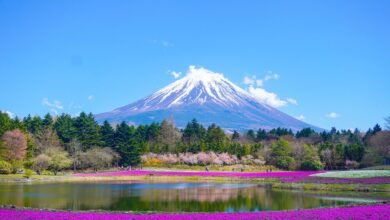Visitors are enthralled by the Kalash Valley, a dynamic and distinctive ethnic minority that calls the isolated valleys of Northwestern Pakistan home. The Kalash Valley are known for their rich cultural heritage and age-old customs. To fully explore the fascinating world of the Kalash people, this essay will focus on its history, way of life, festivals, religion, language, traditions, difficulties, and preservation attempts. Join us as we go on this interesting adventure to learn more about the Kalash people’s distinctive culture and fascinating way of life.
Introduction
The Kalash people have over time managed to preserve their own identity and traditions while residing in the breathtaking Hindu Kush mountain range. These 4,000 or so indigenous people are well-known for their unique customs, festivals, and close-knit society.

History
The Kalash people have ancient origins, with hypotheses positing ties to Alexander the Great and the Greek forces of antiquity. The Indo-Aryans who colonized the area thousands of years ago and gave rise to the Kalash’s distinctive culture and way of life are thought to be their ancestors.

Lifestyle
The distinctive attire and ornate decorations of the Kalash people represent their deeply ingrained cultural tradition. Men dress in traditional hats and accouterments, while women don vividly colored embroidered garments and exquisite beadwork. The Kalash people have a distinctive social structure that places a focus on extended families and peaceful coexistence in addition to clothing.
Festivals and Celebrations
The Kalash people hold several interesting festivals all throughout the year to show off their good humor and respect for the natural world. The Kalash dance, sing and give prayers for a fruitful harvest at the Chilam Joshi celebration, which ushers in spring. While the Choimus celebration draws the neighborhood together in the winter to celebrate their culture via rituals, music, and dancing, the Uchau festival heralds the abundant harvest season.

Religion and Beliefs
The legendary stories and antiquated rites of the Kalash people are deeply ingrained in their religious beliefs. They adhere to a polytheistic religion and worship a pantheon of deities. With ceremonies held to seek blessings for fertility, protection, and wealth, the Kalash valley’s traditions show their close ties to nature.
Language
An essential component of their cultural identity is the Kalash language. It is an Indo-European language that stands out from the surrounding tongues due to its distinctive features. This endangered language is being preserved to secure its survival for future generations.
Traditions and Customs
The Kalash people live according to a vast tapestry of conventions and traditions that control several facets of their lives. Each stage, from conception to marriage to death, is identified by particular rites and practices. The Kalash Valley’s people also follow several taboos and superstitions that have an impact on their way of life and interactions.
Challenges and Preservation
Despite the beauty and significance of the Kalash culture, it faces numerous challenges in the modern world. The encroachment of modernization, tourism, and external influences pose threats to the preservation of their unique way of life. However, dedicated organizations and individuals are working tirelessly to raise awareness and implement measures to safeguard the Kalash culture.
Conclusion
The Kalash people provide a window into a fascinating world that is both unique and enthralling thanks to their deep historical origins and colorful traditions. The Kalash Valley show the tenacity of their culture via their celebrations, traditions, and beliefs. We can contribute to ensuring the preservation of this extraordinary cultural treasure for future generations by recognizing and supporting their efforts.
FAQS for Exploring the Unique Culture of Kalash Valley in the World
What is the unique culture of the Kalash people?
The Kalash culture is rich in their unique rituals, music, dance, and celebrations, particularly their colorful festivals that attract visitors from all over the world. They are also well-known for their vibrant clothing and their polytheistic religion, which is unique amongst the largely Islamic region.
What are the key festivals of the Kalash?
The Kalash community celebrates three main festivals: the Chilam Joshi in May, the Uchau in autumn, and the Chaumos in winter. These festivals celebrate seasonal change and are full of music, dancing, and rituals.
What is the Kalash language?
The Kalash language, also known as Kalasha-mun, is a member of the Dardic group of the Indo-Aryan family. It is spoken by the Kalash people in the valleys of Bumboret, Birir, and Rumbur.
What is the religion of the Kalash people?
The Kalash people practice a form of ancient Hinduism mixed with animistic and ancestor veneration, making their religious practices unique. They believe in several gods and goddesses and hold elaborate rituals and festivals in their honor.
What is the population of the Kalash people?
As of my knowledge cut-off in September 2021, there were estimated to be around 3,000 to 4,000 Kalash people. However, numbers might have changed, and you should look up the most recent statistics.
What threats does the Kalash culture face?
The Kalash culture faces various threats, including forced conversions to Islam, cultural assimilation, modernization, and disputes over land. There is a genuine concern that the unique culture and traditions of the Kalash are disappearing.
How can one visit the Kalash valleys?
The Kalash valleys can be reached from Islamabad, Pakistan, by a short flight to Chitral, followed by a drive to the valleys. Alternatively, you can drive from Islamabad to the valleys, which takes approximately 10 hours. It's recommended to check the current travel advice and requirements before planning a visit.
What should one know before visiting the Kalash valleys?
Visitors should respect local customs and traditions, dress modestly, and ask permission before taking photos. It is also worth noting that while the Kalash people are hospitable and welcoming, excessive tourism can have harmful impacts on their community and culture.
What efforts are being made to preserve the Kalash culture?
Several organizations are working to preserve the Kalash culture, including local and international NGOs. They focus on areas like education, cultural preservation, and land rights. Additionally, some efforts are being made to document the Kalash language and customs to ensure they are not lost.








